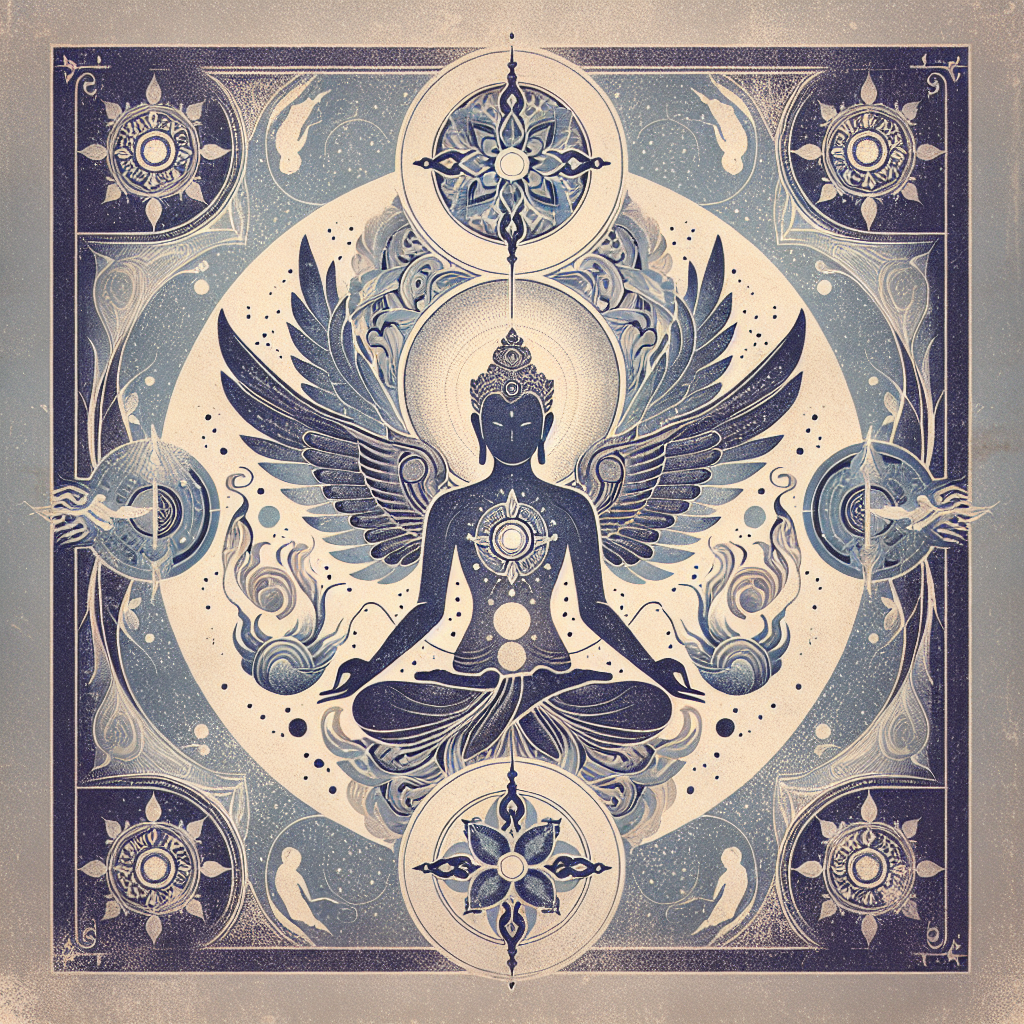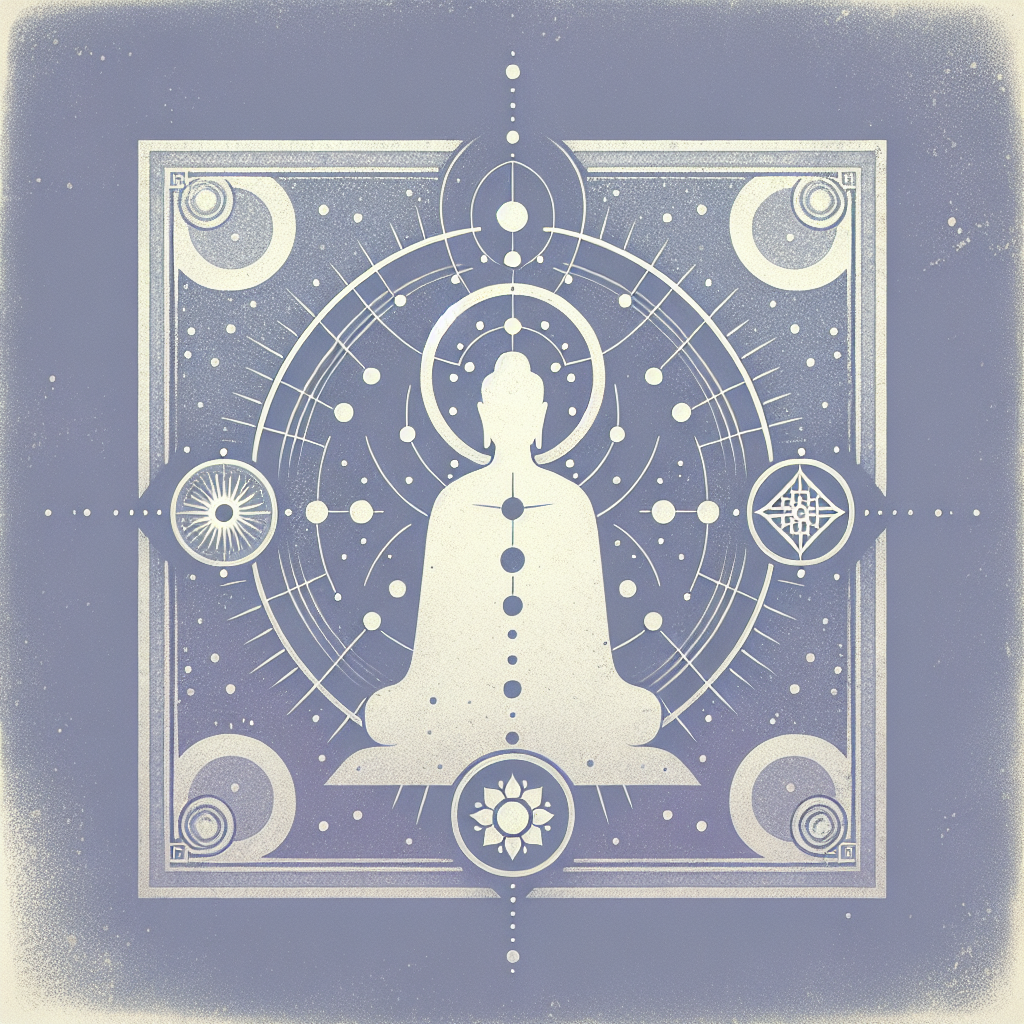
Bodhisattva: The Awakening-Being
Introduction
A bodhisattva (Sanskrit: बोधिसत्त्व, bodhisattva; Pāli: bodhisatta; Chinese: 菩薩 púsà; Japanese: 菩薩 bosatsu; Tibetan: byang chub sems dpa’) is an “awakening-being” — a person who seeks Buddhahood not only for oneself but for the welfare and liberation of all sentient beings. The term appears in early Buddhist literature to describe the Buddha-to-be in his previous lives and later becomes the central ideal of Mahāyāna Buddhism, often anglicized as Mahayana Buddhism, which spread from South Asia into Central, East, and Southeast Asia.
The concept formed over several centuries. Its earliest attestations are in Pāli canonical and commentarial materials (compiled c. 3rd–1st century BCE). Mahāyāna sources from roughly the 1st century BCE–1st century CE then articulate the bodhisattva path as a distinct vocation open to many practitioners. [1][2][4]
Mythological Background
In early Buddhist narratives—especially the Jātaka and Buddhavaṃsa collections—“bodhisatta” designates the Buddha in former lives. These stories emphasize the gradual accumulation of merit and virtue across vast eons (kalpas) before his final awakening as Śākyamuni in northern India (5th–4th century BCE by traditional South Asian chronologies; modern scholarship typically places him c. 5th century BCE). They highlight the long cultivation of generosity, self-sacrifice, and wisdom as prerequisites of Buddhahood, in line with Bodhisattva training. [2][4]
Mahāyāna scriptures reframed and expanded this model. Texts such as the Prajñāpāramitā (“Perfection of Wisdom”) literature, the Lotus Sūtra, the Vimalakīrtinirdeśa, the Avataṃsaka (Huayan) corpus, and the Daśabhūmika Sūtra present the bodhisattva path as a systematic training for the benefit of all beings within Mahayana Buddhism. They introduce cosmic bodhisattvas—Avalokiteśvara, Mañjuśrī, Samantabhadra, Kṣitigarbha, and others—who embody compassion, wisdom, and skillful means (upāya).
Scholars debate the precise social settings that produced these sūtras. A broad consensus places their emergence within diverse communities in northwestern and central South Asia, linked to monastic and lay networks from the last centuries BCE onward. [1][3][4]
The Core Vow and Bodhicitta
A pivotal innovation of this path is the vow (praṇidhāna) to delay one’s own final nirvāṇa until all beings are liberated. In buddhism, this vow is sustained by bodhicitta (“awakening-mind”), a quintessential Bodhisattva resolve, often described in two modes:
- Aspirational bodhicitta: the heart’s resolve to attain Buddhahood for others’ sake.
- Engaged bodhicitta: the active pursuit of practices that realize that resolve.
The bodhisattva’s journey is commonly mapped as an ascent through stages (bhūmis)—often ten—each marked by deepening virtue, clarity, and insight—hallmarks of Bodhisattva cultivation in Mahayana Buddhism. [1][4]
Appearance, Symbols, and Powers
In visual culture, bodhisattvas are shown with princely ornaments, distinguishing them from the usually ascetic image of Buddhas. Common features include jeweled crowns, necklaces, armlets, and silk garments. These symbolize their active presence in the world—“adorned” with virtues and the means to benefit beings—a Bodhisattva presence engaged with the world.
Well-known figures carry distinctive attributes:
- Mañjuśrī: a sword of wisdom and a scripture (often the Prajñāpāramitā).
- Avalokiteśvara: a lotus and sometimes a small image of Amitābha in the crown.
- Kṣitigarbha: a monk’s appearance with a wish-fulfilling jewel and staff.
- Tārā (especially in Tibetan and trans-Himalayan contexts): a dynamic savioress.
These symbols function pedagogically, encoding doctrinal qualities—wisdom, compassion, vow, and rescuing power—rather than merely denoting personality, within Mahayana Buddhism and central to Bodhisattva ideals. [2][3]
Training: The Perfections and Capacities
Texts summarize the bodhisattva’s training as the cultivation of perfections (pāramitā). A common sixfold list is:
- Generosity (dāna)
- Morality (śīla)
- Patience (kṣānti)
- Vigor (vīrya)
- Concentration (dhyāna)
- Wisdom (prajñā)
Some traditions expand to ten by adding:
- Skillful means (upāya)
- Vow (praṇidhāna)
- Power (bala)
- Knowledge (jñāna)
These perfections are practiced across immeasurable lifetimes, supported by compassion and nondual insight—the heart of Bodhisattva practice. Within Buddhist cosmologies, bodhisattvas are credited with protective and salvific functions—averting dangers, hearing the cries of the world, guiding the dying, and leading beings toward favorable rebirths or awakening. These are understood as soteriological aims, not as “miraculous” claims in a modern empirical sense. [1][2][4]

How They Were Worshipped
Historical evidence shows a wide range of veneration practices:
- Commissioning images and stupas
- Offering flowers, incense, lamps, and food
- Reciting names and mantras
- Pilgrimages to sites linked with famous bodhisattvas
The mantra of Avalokiteśvara—Oṃ maṇi padme hūṃ—became especially widespread in Inner Asia, inscribed on prayer wheels and mani walls. Its use functions as a devotional expression of compassion-centered practice and service rather than a medical therapy, and robust clinical evidence for health effects is lacking. [2][3]
Ritual manuals and liturgies in Mahāyāna and Vajrayāna communities prescribe invocations, visualization practices (dhyāna/yoga), and offerings to align one’s mind with a bodhisattva’s qualities. Both lay and monastic Buddhists may take bodhisattva vows or precepts, committing to cultivate bodhicitta and the perfections. These vows are transmitted in various ordination lineages in East Asia and the Himalayas. While devotional practices can resemble the worship of deities in other traditions, authoritative Buddhist sources interpret them as directed toward enlightened compassion and wisdom, with the ultimate aim of transforming the practitioner. [1][2][4]
Different Versions Across Cultures
South Asia
Early Mahāyāna sources from the Indian subcontinent present the bodhisattva path as the normative ideal for those seeking supreme Buddhahood. Figures like Avalokiteśvara and Mañjuśrī appear in Sanskrit sūtras as cosmic exemplars. The Daśabhūmika Sūtra outlines ten stages, describing a graded path integrating meditation, morality, and wisdom. Maitreya (the future Buddha) also functions as a paradigmatic bodhisattva residing in Tuṣita heaven, awaited by devotees. [1][4]
Central Asia and the Silk Roads
As Buddhism traveled along caravan routes, images and cults of bodhisattvas reached Gandhāra, Kucha, Dunhuang, and beyond. Texts and iconography display hybrid styles, supported by merchant and local elite patronage. Manuscripts and murals from oasis sites show the devotional prominence of Avalokiteśvara and frequent motifs of compassionate intervention. [2][3]
China, Korea, and Japan
In East Asia, the bodhisattva ideal shaped monastic codes, lay ethics, and popular devotion. Avalokiteśvara became Guanyin (Japanese: Kannon), a focus of prayer for protection and deliverance. Over time, East Asian iconography often portrays Guanyin in feminine form, reflecting local devotional developments. Kṣitigarbha (Chinese: Dizang; Japanese: Jizō) gained prominence as guardian of beings in difficult realms and as protector of travelers and children. East Asian communities developed bodhisattva-precept traditions for both monastics and laity, nurturing vows to save beings and cultivate compassion in everyday life. [2][3][4]
Tibet and the Himalayan Regions
Tibetan Buddhism integrates the bodhisattva path with tantric ritual. Avalokiteśvara (Tibetan: Chenrezik) is revered as a patron of Tibet. The cultivation of bodhicitta is foundational in scholastic curricula and contemplative training. Lineages emphasize systematic development of compassion and wisdom, using analytic meditation and deity-yoga to internalize bodhisattva qualities. The Six Perfections, ten bhūmis, and four immeasurables (loving-kindness, compassion, empathetic joy, equanimity) are standard frameworks. [1][2][4]
Theravāda Contexts
In Pāli and Theravāda sources, bodhisatta typically refers to the Buddha-to-be rather than a general vocation adopted by many. Even so, some Theravāda polities historically valued the bodhisatta kingship ideal, and modern reformers sometimes invoked the bodhisattva ethic of universal compassion. These uses do not displace the predominant Theravāda focus on arahantship as a legitimate soteriological goal. [2][4]
Interpretive Debates
Modern scholarship discusses how “new” the Mahāyāna bodhisattva ideal was, whether it arose among lay communities or within monastic scholastic circles, and how it engaged existing devotional practices. Texts like the Ugraparipṛcchā (Inquiry of Ugra) present a demanding ethic of altruism and endurance, suggesting a conversation with earlier Buddhist ascetic values while opening a more inclusive path for diverse practitioners.
Across regional variations, a stable kernel persists: the aspiration to awaken for the sake of all beings, sustained by compassion, wisdom, and skillful means—a Bodhisattva ethic—a path of inner transformation that connects personal insight with the welfare of the world. [1][4]
Sources
[1] Paul Williams, Mahāyāna Buddhism: The Doctrinal Foundations, 2nd ed., 2009. Authoritative synthesis of Mahāyāna doctrines, including bodhisattva vows, perfections, and stages. Routledge. https://www.routledge.com/Mahayana-Buddhism-The-Doctrinal-Foundations/Williams/p/book/9780415439990
[2] Robert E. Buswell Jr. and Donald S. Lopez Jr., The Princeton Dictionary of Buddhism, 2014. Standard reference detailing terminology, figures, and practices tied to the bodhisattva ideal. Princeton University Press. https://press.princeton.edu/books/hardcover/9780691157863/the-princeton-dictionary-of-buddhism
[3] Encyclopaedia Britannica Editors, “Bodhisattva,” 2024. Concise overview of definitions, iconography, and worship across regions. https://www.britannica.com/topic/bodhisattva
[4] Peter Harvey, An Introduction to Buddhism: Teachings, History and Practices, 2nd ed., 2013. Academic survey of doctrines, ethics, and history, situating the bodhisattva path. Cambridge University Press. https://www.cambridge.org/9780521676748